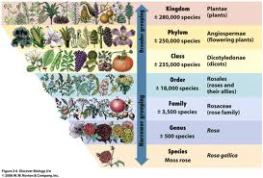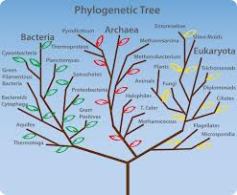Linnaeus developed the scientific naming system that is still used today. The purpose of this binomial nomenclature is to standardise the names of different species as people in different countries call species different names, leading to ambiguity.
The scientific name of an organism will first include the (capitalised) genus, followed by the species name, e.g.. Homosapiens
Taxonomy is the science of classifying organisms. A taxon is a group of organisms within a classification system.
A genus includes one or more physically similar species.
The Linnaeus classification system has 7 levels- Kingdom, phylum, class, order, family, genus, species.
Each of these levels are more specific than the one above, thus narrowing down the number of species.
However, the taxonomy does not account for molecular evidence. The Linnaen system is based only on physical similarities, which are not always the result of close relationship.
Genetic similarities show more accurately evolutionary relationships.
Classification is always a work in progress as new discoveries will lead to changes in the classification system. The most current system is the Tree of Life.
The 6 kingdoms- Animalia, plantae, protista, fungi, bateria and archaea are under 3 different domains- Bacteria, archaea and eukarya.
The domain model show more accurately prokaryotic diversity. The model was proposed when Carl Woese did rRNA studies on prokaryotes. RRNA (ribosomal RNA) is the product of protein synthesis.
The bacteria kingdom is under the bacteria domain, the archaea kindom is under the archaea domain, and eukarya consists of plantae, protista, animalia and fungi.
Bacteria and Archaea are prokaryotic while Eukarya are eukaryotic.
Domain bacteria is classified by shape, need for oxygen and diseases caused. Cell in domain archaea have cell walls chemically different from bacteria and are known for living in extreme environments.
Modern taxonomy- six kingdoms are more traditional and based on morphological characteristics such as major cellular structure, methods of obtaining nutrients and metabolism.

